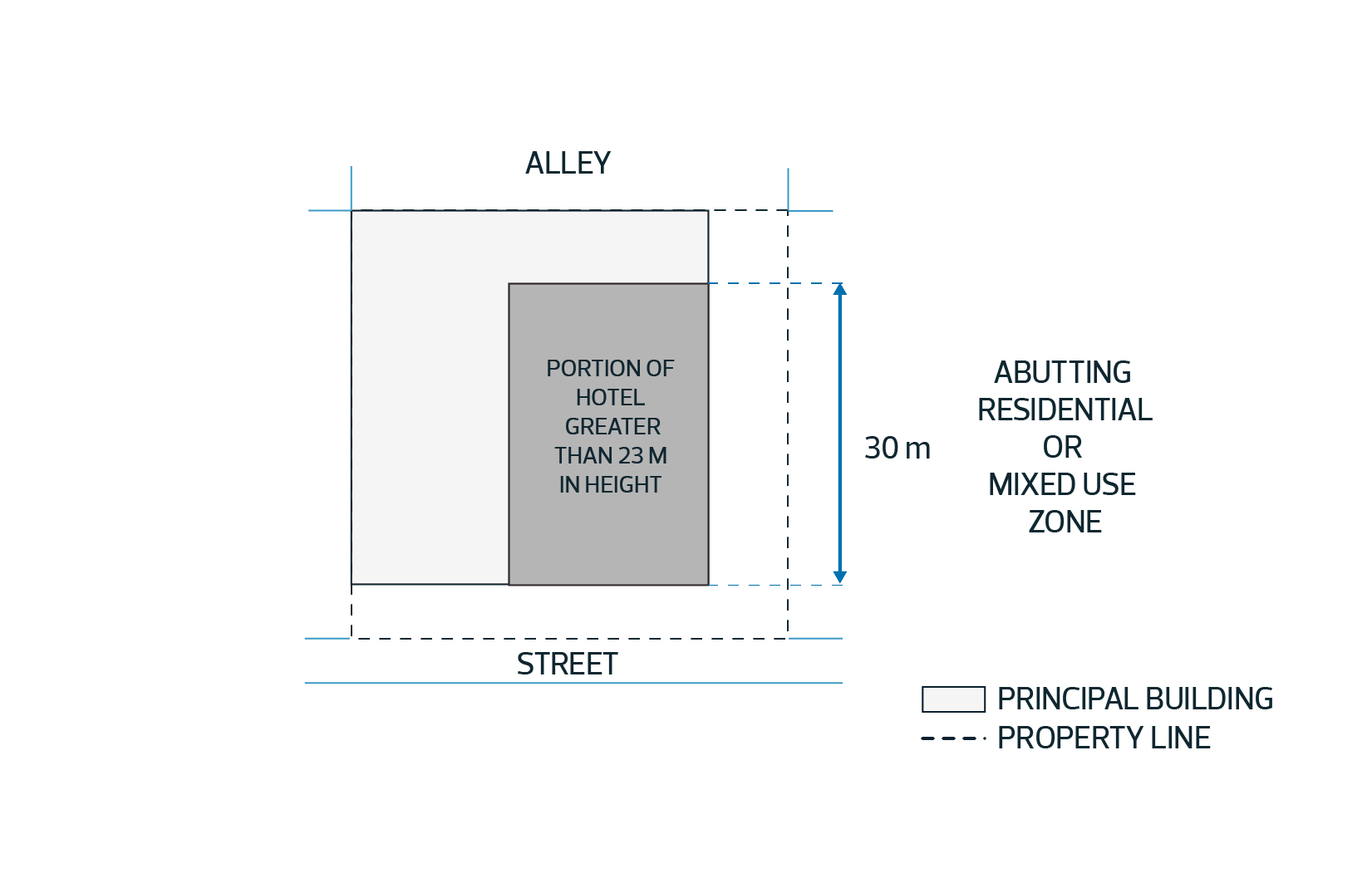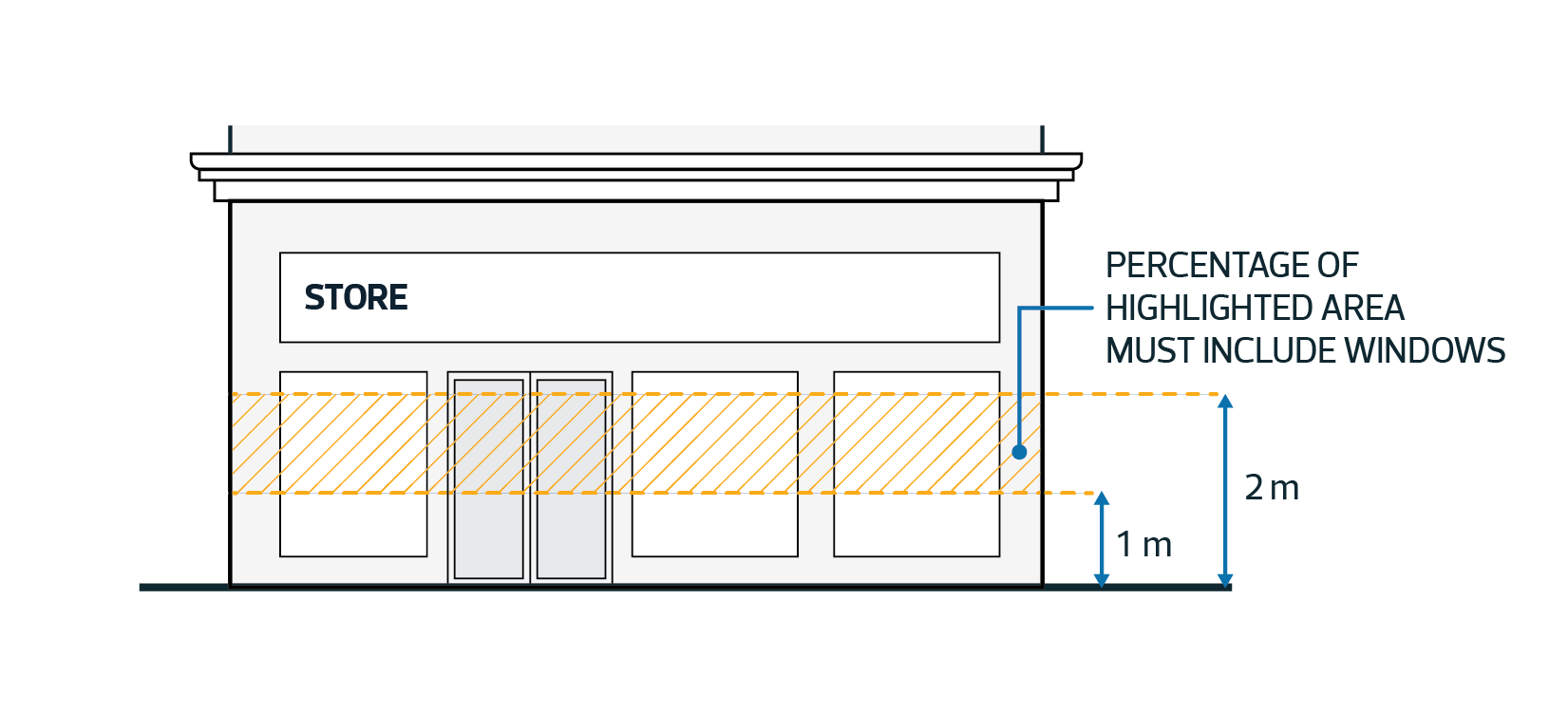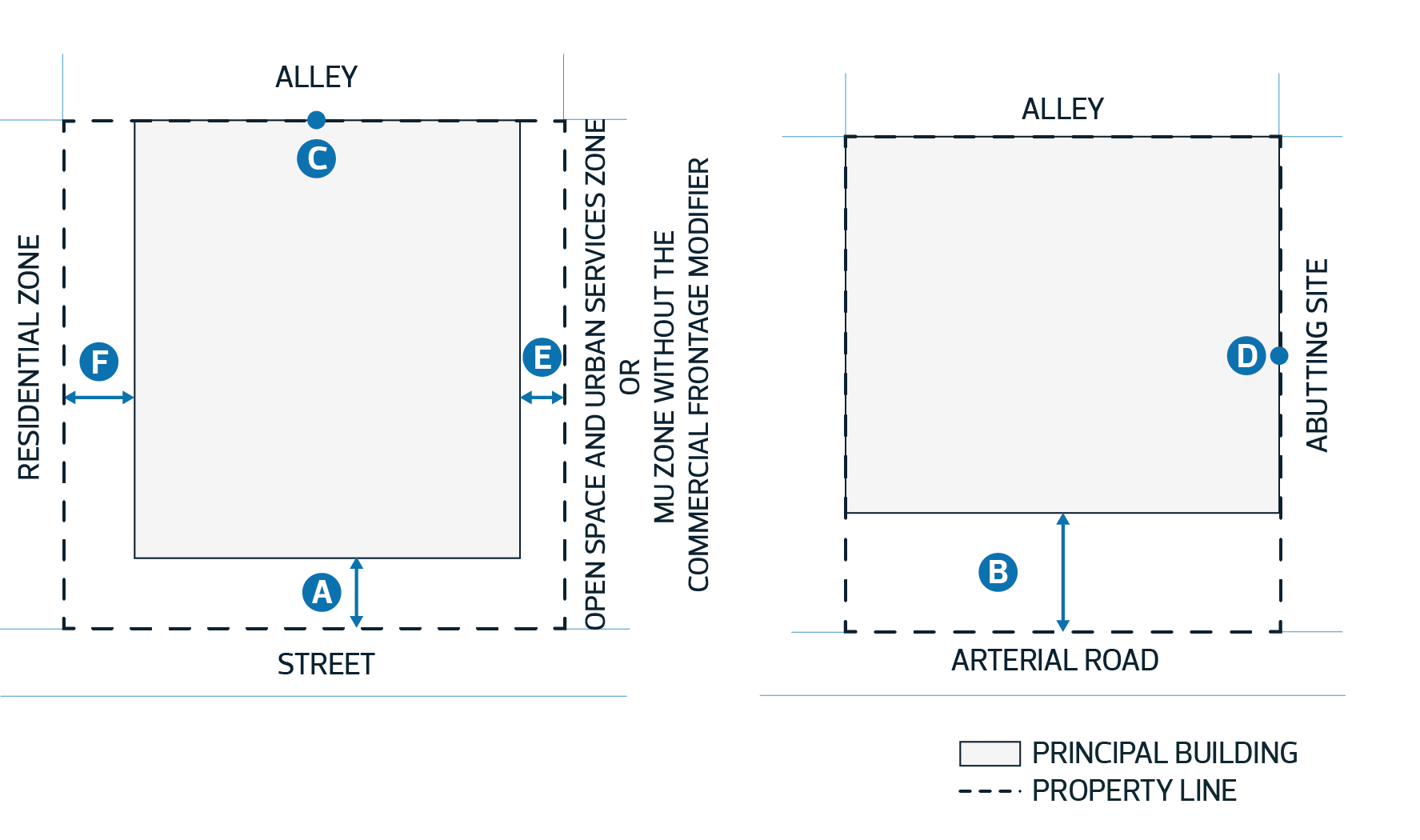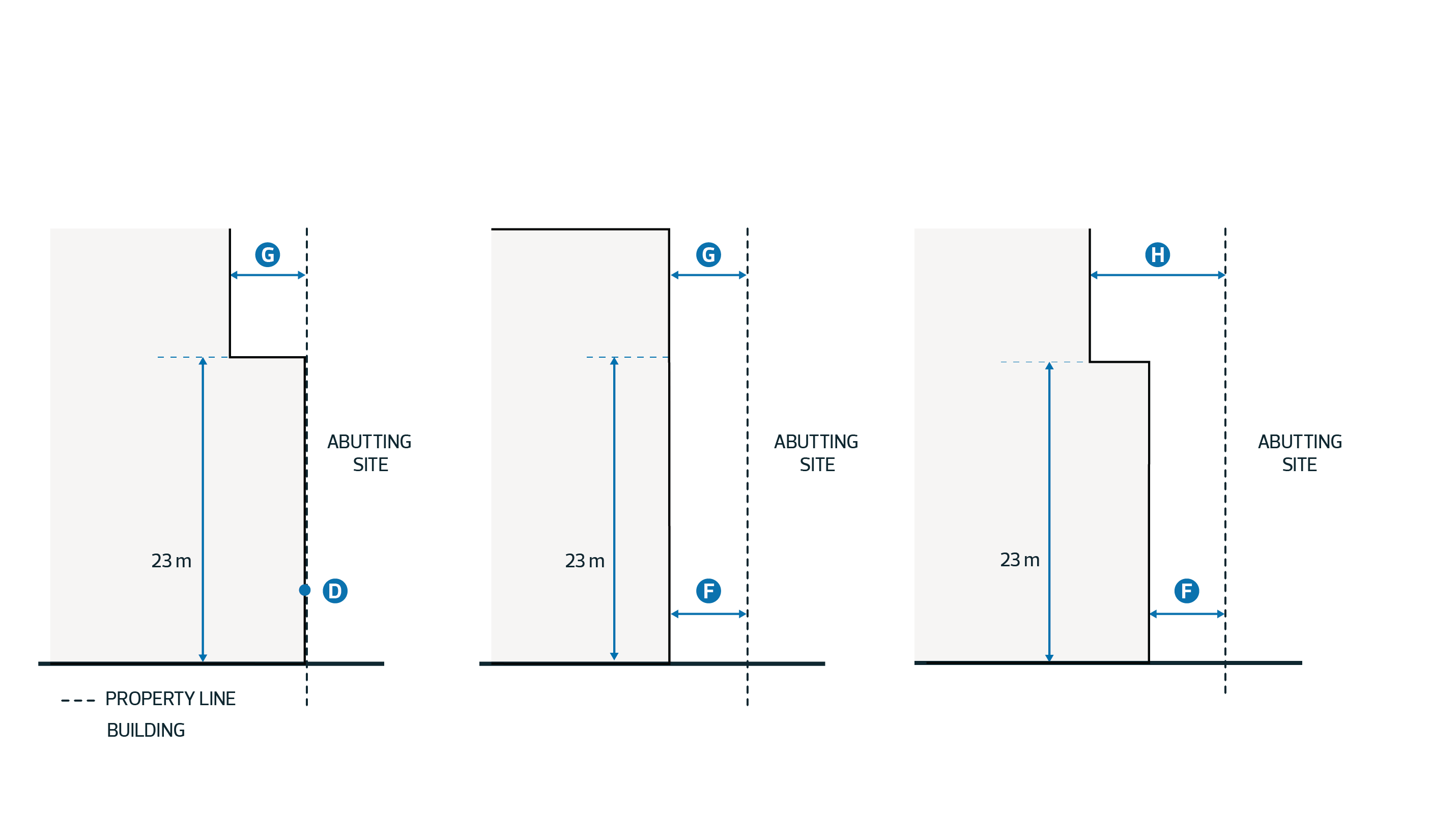Building Design Regulations
|
| 5.1. |
Where a building wall has a total length greater than 25.0 m that: |
| |
| 5.1.1. |
faces a Street, Park, or a Site in a residential or mixed use Zone; or |
| 5.1.2. |
has a main entrance facing a Parking Area internal to the Site, |
| the Facade must be articulated using 2 or more design techniques or features to minimize the perception of massing, eliminate large blank walls, provide visual interest, and enhance the appearance of buildings during winter months. Design techniques or features may include: variations in rooflines; vertical or horizontal building wall projections or recessions; visual breaks of building Facades into smaller sections; use of a combination of finishing materials; or other similar techniques or features. |
|
| 5.2. |
Subsection 5.1 does not apply to building walls facing and built to a shared Lot line in order to establish a continuous Street Wall with the Abutting Site. |
| 5.3. |
The maximum Facade length is 30.0 m for portions of Hotels that are greater than 23.0 m in Height on Sites Abutting, or directly across an Alley from, a Site in a residential or mixed use Zone. |
| |
Diagram for Subsection 5.3

|
|
| 5.4. |
On Corner Sites, the Facade design and materials must wrap around the side of the building to provide a consistent profile facing both Streets. |
| 5.5. |
For new buildings and additions, main entrances must be level with, or have sloped doorway thresholds to, Abutting Pathways and public sidewalks. |
| 5.6. |
Main entrances must incorporate weather protection features in the form of canopies, awnings, overhangs, vestibules, recessed entrances, or other Architectural Elements to provide all-season weather protection to pedestrians and to enhance the visibility of entrances. |
| i |
|
Additional Building Design Regulations for Main Street Developments
|
| 5.7. |
For new buildings and additions, where a non-Residential Use is located on the Ground Floor adjacent to a Street: |
| |
| 5.7.1. |
the main entrance must be directed towards a Street; and |
| 5.7.2. |
the main entrance must be level with, or have sloped doorway thresholds to, Abutting Pathways and public sidewalks. |
|
| 5.8. |
Ground Floor Facades facing a Street must be designed to break up the appearance into sections of 11.0 m or less by incorporating 2 or more design features such as those described in Subsection 5.1. |
| 5.9. |
To promote pedestrian interaction and safety, Ground Floor non-residential Facades must comply with the following: |
| |
| 5.9.1. |
Where a Facade faces a Street, a minimum of 65% of the Facade area between 1.0 m and 2.0 m above ground level must be windows. |
| 5.9.2. |
Despite Subsection 5.9.1, for exterior alterations to existing storefronts that involve adding or removing windows, a minimum of 50% of the Facade area between 1.0 m and 2.0 m above ground level facing a Street must be windows. |
Diagram for Subsection 5.9

|
|
|
| 5.10. |
Facade design and materials for Interior Sites must wrap around the side of the building to provide a consistent profile for building corners facing Streets and Alleys, except that Facades facing an Alley do not require windows. |




